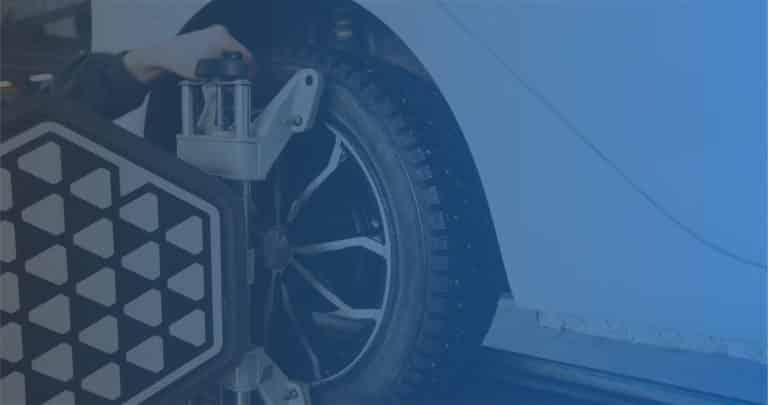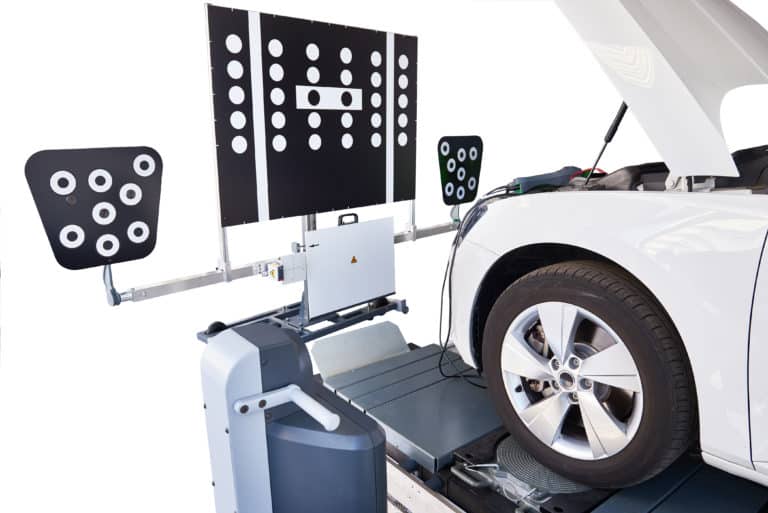The ABS (Anti-lock Braking System), is designed to prevent the car’s wheels from locking up during hard braking to maintain steering control in an emergency. When the ABS light comes on, it’s the vehicle’s way of indicating that the system isn’t functioning properly. While the regular brakes will still function, a driver could lose the safety net that ABS provides when needed most. In this post, we’ll explore what the ABS warning light means, the most common reasons it turns on, how it affects the ability to drive safely, and the connection between ABS and advanced driver-assistance systems (ADAS) technologies. By the end of this article, you’ll understand why this light deserves a driver’s attention and how professional diagnostics and calibration can keep the vehicle’s safety systems working as intended.
The Role of ABS in Modern Vehicles
ABS prevents wheel lockup during sudden or hard braking by rapidly pulsing brake pressure at each wheel. When a tire locks and skids, you lose directional control and stopping efficiency. ABS uses wheel speed sensors, a hydraulic modulator, and an electronic control unit (ECU) to gauge brake pressure dozens of times per second, helping a driver to steer around hazards while still slowing down quickly.
Now that you know what ABS is designed to do, the next question is simple: what is the car actually saying when the amber “ABS” icon lights up?
What Does the ABS Light Mean?
When the ABS light turns on, the car is telling you the anti-lock subsystem has logged a fault. The base hydraulic brakes still work, but ABS interventions may be partially or fully disabled. That can change how the car reacts in emergency stops or on slick roads.
A few clarifications we’re often asked:
- ABS light vs. brake warning light: The red “BRAKE” (or an exclamation mark in a circle) typically indicates low fluid, parking brake engaged, or a hydraulic issue. The amber ABS light is specific to the ABS electronics/hydraulics and usually won’t affect everyday gentle stops.
- Intermittent vs. solid light: An intermittent light can point to a marginal sensor or wiring fault that appears only under certain speeds or temperatures. A solid light often means a stored trouble code that will persist until it is resolved.
- “But I don’t feel anything wrong.” That’s common. ABS only intervenes when a wheel is about to lock. If a driver hasn’t braked hard or hit a slick patch lately, he or she might not “feel” the difference, but the safety net isn’t there if needed.
Common Reasons Why the ABS Light Comes On
There are many potential triggers, but a handful of patterns account for most cases:
- Wheel Speed Sensor Problems
Each wheel has a sensor (magnetic or Hall effect) that reads the teeth of a tone ring/encoder. Rust buildup, cracked tone rings, bent dust shields, or debris misalign the gap, causing false signals. Road salt and off-road use can be especially hard on exposed sensor leads near the hub. - Damaged Wiring or Connectors
The harness that runs to each sensor operates in a harsh environment: exposed to heat, moisture, rock chips, and constant movement from steering and suspension travel. Frayed insulation, broken grounds, or corroded connectors can result in issues. - Contaminated or Low Brake Fluid
While ABS has an independent ECU and modulator, it shares the brake fluid. Old fluid absorbs moisture, reducing the boiling point and promoting internal corrosion. - ABS Control Module (ECU) Faults or Software Failures
This is less common but real. Heat cycling and vibration can cause solder joint fatigue; water from leaks can corrode module pins. - Power and Ground Problems
Weak batteries and poor grounds can cause low-voltage events during startup or heavy electrical loads, setting fault codes. If you see other warning lights or experience slow cranks, test battery health and main grounds first. - Mismatched Tire Sizes or Tire Pressure
ABS looks at wheel behavior from relative wheel speeds. A compact spare, uneven tread depths across an axle, or one really underinflated tire can convince the system that something is wrong.
Understanding the likely culprits makes diagnosis feel less mysterious. Having the driver consult a professional may save time and prevent further issues down the road.
The Role of ABS in ADAS and Vehicle Safety Systems
Today’s ABS hardware is the foundation for many stability and driver-assist features. ABS sensors and the hydraulic modulator don’t operate in a vacuum; they feed and execute other systems’ commands:
- Traction Control (TCS): Uses wheel speed data to detect slip under acceleration; it may pulse the brakes on a spinning wheel while the engine computer reduces torque.
- Electronic Stability Control (ESC): Monitors steering angle, yaw rate, lateral acceleration, and wheel speeds to detect understeer/oversteer. It selectively brakes individual wheels to nudge the car back toward the intended path. That selective braking is performed through the ABS modulator.
- Hill-Start Assist and Auto-Hold: Rely on precise hydraulic control to hold the vehicle briefly without rolling.
- Advanced Driver-Assistance Systems (ADAS): Forward collision warning with automatic emergency braking (AEB), adaptive cruise control, and lane keeping often rely on stable, predictable braking responses. If ABS isn’t healthy, AEB performance can be compromised or disabled.
Why this matters: When the ABS light is on, you’re not just losing anti-lock. You may be degrading the backbone of traction control, stability control, and any ADAS feature that expects the brake system to respond instantly and accurately.
Can you drive with the ABS light on?
Yes, cautiously. The base brakes function properly, but drivers should avoid hard stops and low-traction situations until the repairs are complete. If the red brake light is on as well, the driver should stop driving and inspect the vehicle immediately. This can indicate a hydraulic issue, not just an ABS issue.
Diagnosing and Fixing the ABS Warning Light
So how can you tell if the ABS warning light is pointing to a simple issue or something more complex?
- Pull Diagnostic Trouble Codes (DTCs)
A scan tool that can read ABS is step one. Generic OBD-II readers often fail to capture ABS-specific codes. Look for C0xxx series codes and freeze-frame data: vehicle speed, temperature, and conditions when the fault was stored. - Inspect Wheel Speed Sensor Data Live
With a capable scan tool, view live wheel speed PIDs while spinning each wheel off the ground. You’re looking for a wheel whose readout is noisy, zero, or lags. - Physical Inspection
Lift the car safely and inspect the sensor faces, tone rings, and harness routing. Check for rust jacking around the tone ring, cracked encoders, or metal shavings stuck to the magnetic sensor tips. Gently tug harness segments near the knuckle; if the light flickers or data drops, you’ve found a suspect. - Electrical Tests
Use a DVOM (digital volt-ohm meter) to check sensor resistance (for passive types) or supply voltage (for active Hall sensors). Wiggle the harness while testing. Verify power and ground at the ABS module. - Fluid Service and Bleed
If contamination may be the issue, a full fluid exchange using the correct DOT specification (DOT 3/4/5.1 as listed in your manual) helps protect the valves and pump. - Software & Calibration Checks
After hardware repairs, check for TSBs and module updates. For vehicles with integrated longitudinal/lateral acceleration or yaw sensors, a static or dynamic zero-point calibration may be required.
If drivers still have questions or concerns about the repairs, encourage them to seek a second opinion from a trusted professional. Investing in accurate troubleshooting not only resolves the immediate issue but also helps maintain the vehicle’s overall reliability.
Start or Grow Your ADAS Sensor Calibration Center with Car ADAS
From faulty wheel speed sensors to wiring or module issues, there are several reasons the ABS warning light may turn on. Ignoring it can compromise braking, as well as other ADAS features, such as stability control, traction control, and collision prevention. The good news is that ABS issues can be diagnosed and repaired with the right tools, and once fixed, the ADAS systems can be properly calibrated to ensure everything works together properly. At Car ADAS, we partner with businesses to launch and grow ADAS calibration centers through a complete turnkey program. Whether you’re just starting out or looking to expand, we’ll guide you through facility design, OEM-compliant equipment selection, technician training, and daily operational support.







